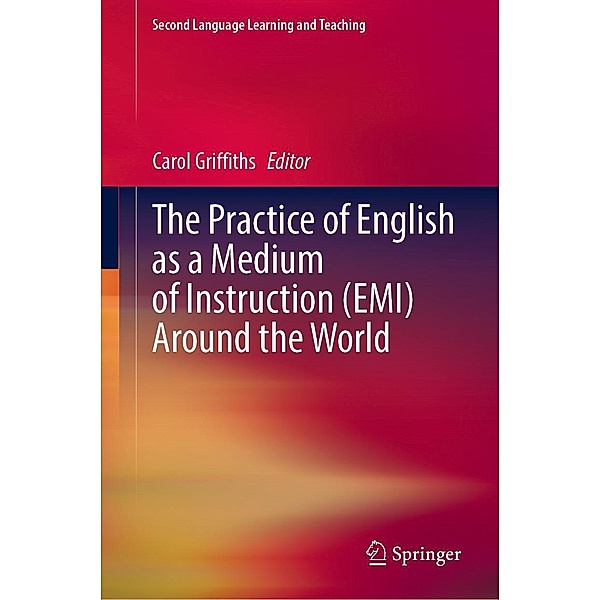- Home
- Publications
- The Practice of English as a Medium of Instruction (EMI) around the World edited by Carol Griffiths, published by Springer
The Practice of English as a Medium of Instruction (EMI) around the World edited by Carol Griffiths, published by Springer
The Practice of English as a Medium of Instruction (EMI) around the World edited by Carol Griffiths
Publisher: Springer
Series editor: Miroslaw Pawlak

Following a foreword by Nicola Galloway and an overview by Carol Griffiths, this edited volume presents eleven empirical papers reporting the existing literature and the results of an original study focusing on EMI (English as a medium of instruction) in a particular area:
- EMI IN SUB-SAHARAN AFRICA
Carisma Nel, Medadi SSentanda
- EMI IN THE MIDDLE EAST
Yasemin Kırkgöz, Muhammed Emin Yüksel, Hamide Aslantürk
- EMI IN NORTH AFRICA
Amira Salama
- EMI IN SOUTHERN AND WESTERN EUROPE
Zoe Gavrilidou, Lydia Mitits
- EMI IN CENTRAL ASIA
Anas Hajar, Yelena Babeshko, Juldyz Smagulova
- EMI IN SOUTH-EAST ASIA
Fenty Lidya Siregar, Robbie Lee Sabnani, Thuy Dinh
- EMI IN LATİN AMERİCA
Loreto Aliaga-Salas, Gonzalo Pérez Andrade
- EMI IN EASTERN AND CENTRAL EUROPE
Miroslaw Pawlak, Katarzyna Papaja
- EMI İN EAST ASİA
Aiko Sano, Yangyan Zheng, Carol Griffiths
- EMI IN SOUTH ASIA
Amol Padwad, Harsha Wijeskera, Prem Phyak, Syed Manan, Naashia Mohamed
- EMI IN NORDIC/BALTIC COUNTRIES
Kenan Dikilitaş, Carol Griffiths
The final chapter of the book by Izzettin Kök summarizes the findings from the 11 different regions.
The main conclusion was that, although results from these numerous and geographically, linguistically and culturally diverse locations might have been expected to show considerable variation, in fact the findings show a remarkable degree of consistency across the regions. From an institutional point of view, the main reasons for adopting EMI seemed to be a desire for an international profile and to benefit from the revenue generated by international students. Students themselves chose EMI courses in the hope of saving time by being able to study language and their subject matter at the same time. Teachers chose to work on EMİ programmes in order to advance their professional profile and also to have access to international publications, most of which are in English.
These advantages, however, were offset by some quite serious disadvantages. Students often found that, although they had hoped to improve both their language and subject knowledge, they often found that this did not happen. Teachers reported often not “choosing” to work in EMI but being instructed to do so by their institutions. And both teachers and students were often found to lack sufficient proficiency to teach or learn effectively in an EMI environment.
The conclusion therefore is that EMI does, indeed, have major potential advantages, but it is often entered into with insufficient preparation and support. The main recommendation of the book therefore is that these problems need urgent attention.
The examination of EMI on a contextual basis is a unique feature of this book, setting it apart from others in the field, which almost all deal with a single or limited context. The volume will be of interest to policymakers, institutional heads, graduate students and their teachers, and to thesis writers and researchers.
News from Pavilion
Short Book Reviews
Hania (Hanna) Kryszewska, PolandThe Practice of English as a Medium of Instruction (EMI) around the World edited by Carol Griffiths, published by Springer